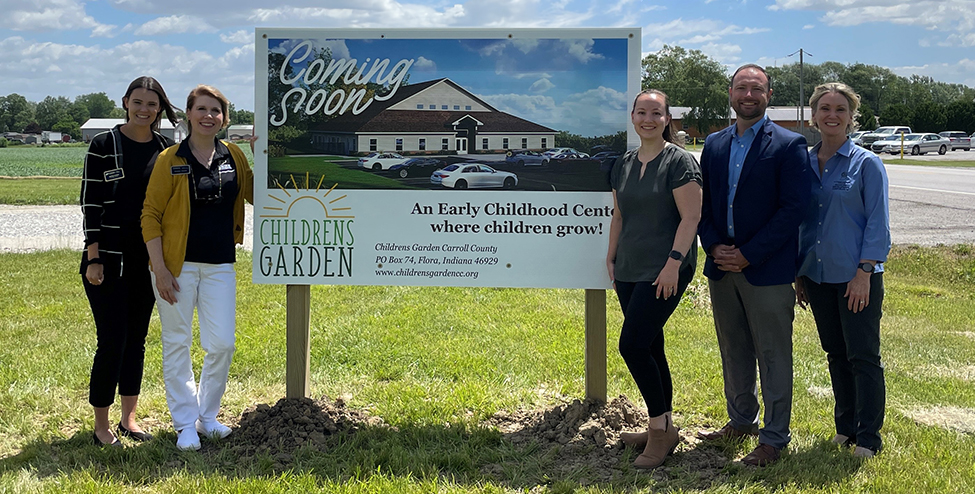Unemployment for Hoosiers: Starting To Stabilize, but Will It Continue?

The global pandemic of 2020 has caused a major spike in unemployment in every state in the union, as well as much of the world – and Indiana has been no exception. To begin examining how COVID-19 affected Indiana’s unemployment situation, we need to understand how unemployment is being defined and why it is necessary to understand. According to the Bureau of Labor Statics (BLS) “people who are jobless, looking for a job, and available for work are unemployed.” The value of knowing who is employed and who is unemployed comes from tracking workers who lose earnings. This creates further issues that cause the goods or services of a region to be diminished and drop in purchasing power. This paradigm can also lead to more workers becoming unemployed.
Unemployment has been tracked for years, and recently the Purdue Center for Regional Development (PCRD) has created a new dashboard to monitor the changes for each of the 92 Indiana counties. In addition to tracking the data for the counties for the entire year, each month is now being tracked and visualized. Taking a closer look at the data, we see that April 2020 was the peak of unemployment for every county within Indiana. Then, from April 2020 to December 2020, almost every county begins to decrease its unemployment and improve its employment situation. Then around January 2021, unemployment rates begin to stabilize from month to month, hovering around 4%. Please note all of the unemployment data is not seasonally adjusted. According to the BLS, this means the unemployment data has not “removed the effects of events that follow a more or less regular pattern each year. These adjustments make it easier to observe the cyclical and other nonseasonal movements in a data series.”
Taking a further look into this data, we find trends regarding some of the counties that are doing better and some of the counties that are doing worse. To put the data into historical context, look at the past 10 years of unemployment rates for Indiana as a whole:
Table 1. The Most Remote Amenable Jobs in Indiana (2019) by Metropolitan Status
| Year | Unemployment Rate | Year over Year Net Change |
|---|---|---|
| 2020 | 7.1% | +3.9 |
| 2019 | 3.2% | -0.2 |
| 2018 | 3.4% | -0.1 |
| 2017 | 3.5% | -0.9 |
| 2016 | 4.4% | -0.4 |
| 2015 | 4.8% | -1.1 |
| 2014 | 5.9% | -1.6 |
| 2013 | 7.5% | -0.7 |
| 2012 | 8.2% | -0.7 |
| 2011 | 8.9% | -1.2 |
| 2010 | 10.1% | -0.4 |
Coming out of the recession of 2007-2009 Indiana, much like other states in the Union, unemployment was high at 10.1%. Fast forward 10 years later and unemployment continually drops a few percentage points, reaching a low of 3.2% in 2019. It is easy to see from the dashboard that the first few months of 2020 continued to improve, as well. Then the pandemic of 2020 started and unemployment rates increased for every Indiana county; however, some counties’ unemployment rate was affected more than others.
Table 2. Top Five Counties (April 2020)
| County | Unemployment Rate |
|---|---|
| LaGrange | 32.7% |
| Howard | 31.0% |
| Elkhart | 30.8% |
| Noble | 28.9% |
| Orange | 27.0% |
The top five counties (with the highest unemployment rate) came in at an average of 30%. Whereas, the bottom five counties (with the lowest unemployment rate) averaged 8.6% in April of 2020.
Table 3. Bottom Five Counties (April 2020)
| County | Unemployment Rate |
|---|---|
| Dubois | 9.7% |
| Hamilton | 9.7% |
| Boone | 8.6% |
| Martin | 7.7% |
| Daviess | 7.5% |
The trend for these counties continues into the month of May as four of the five highest counties’ unemployment rate remains in the group and all five of the lowest counties’ rate remains in the group. Continuing 12 months later into April 2021, the top five counties with the highest unemployment rate averaged 6.1% — better by almost 2 percentage points than the counties that were doing the best in April 2020. These numbers show that Indiana’s overall unemployment rate is rebounding. The most recent unemployment is from September 2021 and puts Indiana at 4.0%. It shows that Indiana has not fully regained its lowest unemployment rates from before the 2020 pandemic, but it is trending in the right direction.
These new data products are now available for all to use, and it will continue to be updated every month with newer BLS unemployment data. You can find the dashboards within this blog post below as well as the PCRD visualization page.

Benjamin St. Germain is a GIS Analyst for the Purdue Center for Regional Development, joining the staff in 2015. Benjamin uses a variety of data... read more




